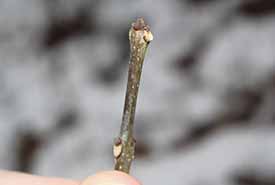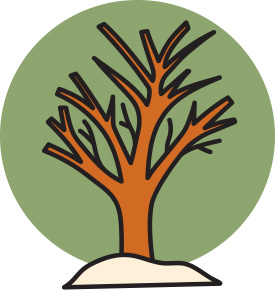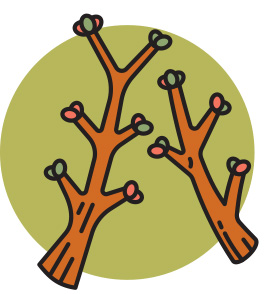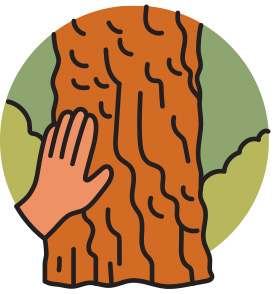No leaves, no problem

White ash bud and twig (Photo by Quinten Wiergersma, CC BY 4.0)
The distinctive leaves of many trees, such as sugar maple, can provide a sense of familiarity in spring and summer. As many trees shed their leaves in the fall, it can be more challenging to tell them apart. However, the clues are there — you just have to know what to look for. Grab a field guide, or an app like iNaturalist, and read on to become a winter tree ID pro.

Tree ID - shape (Illustration by Belle Wuthrich)
Shape
To narrow down a tree species, start from a distance. Is the tree a conifer, generally keeping its needles all year, or is it deciduous, losing its leaves in the fall? If it’s deciduous, look at the shape of the tree. Do the branches spread outward from the trunk horizontally, or reach vertically toward the sky? Compare, for example, the narrow profile of a birch against the wide crown of an oak.

Tree ID - Twigs and buds (Illustration by Belle Wuthrich)
Twigs and buds
Get up close and look at the tree’s twigs. Are the buds — the nubs that will turn into leaves — located opposite each other on the twig, or do they alternate? If there are no buds, look for scars where the leaves were. Opposite arrangements have buds or leaf scars in pairs at each node, such as maple and ash. Alternating arrangements have a single bud or leaf scar per node on alternating sides of the twig, and include poplar, oak and birch.
If buds are present, compare their size, colour and texture against a field guide reference. Some easily identifiable buds include oak (clustered bud ends) and basswood (bright red buds).

Tree ID - bark (Illustration by Belle Wuthrich)
Bark
Up close, tree bark can be identified by sight and touch. Is it white, grey or a darker brown/black? Does it feel smooth, coarse or flaky? With practice, the silver gleam of white birch or the reddish-brown of black cherry can become just as recognizable as their leaves.
Learn more at natureconservancy.ca/wintertreeguide
This story originally appeared in the winter 2023 issue of the Nature Conservancy of Canada Magazine. To learn more about how you can receive the magazine, click here.
Explore additional content from our winter issue here >




